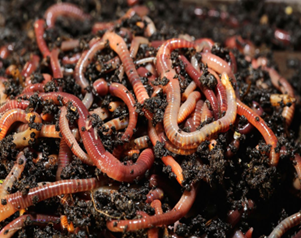What is Biodynamic Agriculture?
What is Biodynamic
Agriculture?
Biodynamic agriculture
is an advanced form of organic agriculture with an emphasis on food quality and
soil health; and as such, uses no synthetic fertilizers or pesticides.
‘Biodynamic’ originates from two Greek words, bios, meaning life, and dynamos meaning energy. The pioneer of biodynamic agriculture was
Rudolf Steiner (1861 – 1925) an Austrian scientist, philosopher, and
educator. He identified the deleterious
effects on the soil and the deterioration of the health and quality of crops
and livestock that farmers experienced following the introduction of chemical fertilizers
at he turn of the twentieth century. In
a series of eight lectures known as the ”Agriculture
Course” made in 1924, Steiner taught the fundamental ecological principle
that the farm is a living organism, an individual self-contained entity within
a whole harmonious system.
In 1928, the first
ecological label “Demeter” was used
to certify the high quality nutritional food produced by organic and biodynamic
agriculture. Since then biodynamic
farming has developed to be one of the most sustainable and successful forms of
organic agriculture practiced in forty countries across the world.
A biodynamic farm is characterized
by self-sufficiency and biodynamic diversity where crops and livestock are
integrated, nutrients are recycled, and the health of the soil, the crops and
animals, and the farmer too, are maintained holistically. The strength and resistance to disease of the
whole system is crucial, so genetically modified organisms (GMOs), which
originate from forcing bits of DNA including those from viruses and bacteria
into plant cells are excluded altogether.
Instead indigenous seed varieties and breeds best suited to the natural
conditions (bedrock, soil, weather, flora and fauna, insects, birds and human
populations) are developed for the specific locality and further distances too.
Biodynamic systems
weave together natural plant, animal and mineral resources within environmental
limits to enhance the quality of soil and crop production and bring about
ecological balance. Consideration of the
farm as an ecosystem feeds into holistic management practices that embrace the
environmental, social and economic aspects of the farm.
Its objectives differ
significantly from those of conventional agriculture, or agribusiness, which
maximizes profit with mechanical and technological inputs for unlimited
exploitation of the earth’s resources.
The biodynamic model feeds family and farm workers first, and then trade
surpluses to the local community. A
central belief is that specific natural substances are carriers of forces which
create life, and that celestial rhythms, primarily the phases of the moon,
directly affect terrestrial life. One
main difference between organic and biodynamic farms is that organic farms
often exclude animals for ethical reasons and mono-crop production is common.
From Science in
Society, Issue 37, Spring 2008, Saving
the World with Biodynamic Farming.




تعليقات